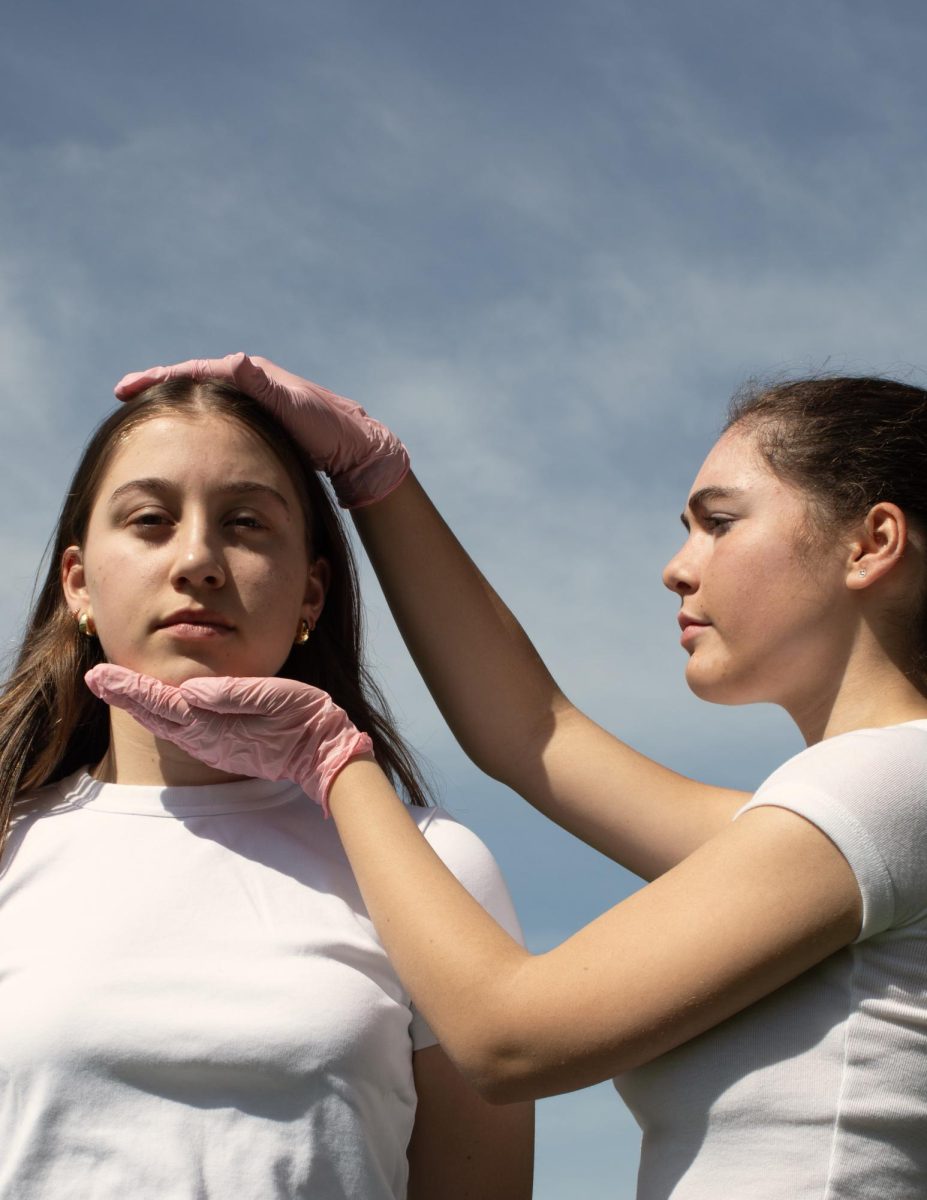By Bella ’21 and Kylie ’22
In response to the COVID-19 pandemic, Marlborough closed on March 12, thus switching all classes to online learning, and bringing the classroom setting into students’ own homes. As a result, Marlborough has adapted to new methods of learning, including using programs such as Zoom and Google Hangouts to meet virtually. Programs like these allow students to learn together in real time. These virtual classes aim to maintain an interactive classroom environment by allowing students to see their teachers and peers.
While the switch to online school was unexpected, students have seen improvements in their wellness and mental health due to the later start time and increased independence. According to a survey, about 28 students found the most common benefits as a result of online school were that they had been getting more sleep, have experienced less stress regarding classwork, and have had more time to complete their homework.
“I feel that online learning creates a more open and less structured environment so everyone has the opportunity to go at their own pace,” Taryn ‘25 said in response to a survey about distance learning.
Despite the benefits of students having more time to complete work, the increased freedom and more lenient schedule online learning provides has also created obstacles. Some students reported on the survey that they have found working at home distracting, have faced challenges participating in class, and felt less motivated to complete work.
“Online learning severely limits the types of activities we can do in classes. This makes classes more repetitive than they might otherwise be. It can also sometimes be more difficult to stay focused when I am on my laptop all day long,” Mira ‘20 said in response to a survey.
Core Classes Online
As Marlborough adjusts the way in which students interact in their classes, teachers have also had to adjust to distance teaching. For example, some classes have taken an asynchronous approach to learning. In a survey sent out to Marlborough teachers, 90% reported that they find using a combination of asynchronous and synchronous learning methods to be effective. Asynchronous learning allows students to complete class work individually, while synchronous learning involves Zoom meetings and face-to-face virtual interactions.
Although many might find it easy to see the negatives of online learning and wish to go back to old schedules and routines, distance learning received some positive feedback.
“The biggest [benefit] that I’ve noticed is that some students who do not choose to communicate much in a full class setting speak freely when in a break-out room with just one or two classmates. I’m getting to know some students who I would not have gotten to know otherwise.” Mr. Frank said in an online survey about distance learning.
Additionally, online learning has made it easier for students to participate more actively, as some of the pressures of being in a physical room are relieved through the comfort provided by a screen and one’s own room. “I like that flexible/motivated students are able to choose how they spend their time. Early birds and night owls can watch lesson videos when they’re the most focused, and can pause, rewind, or speed up lessons to suit their own needs.” Ms. Perez said.
That being said, teachers have also experienced some struggles with the switch to virtual teaching.
“Converting an in-class lesson that I could’ve prepared in 15 minutes into an online format takes anywhere from 60-90 minutes by the time I test the links, embed the content, and convert questions to documents. Giving feedback on the work can take longer online as well,” Dr. Vitanza said in response to a survey about the impacts of distance teaching.
While online learning has altered the daily life of both students and teachers, and despite technological setbacks, teachers and students have learned to adjust. Technological setbacks such as Wi-fi disruptions and lag in Zoom chats have definitely proved to be one of the hardest grievances in online learning, as it disrupts class times; with little knowledge on how to fix such disruptions, this makes it hard for classes to run smoothly at times.
“Sometimes technical glitches and poor internet connections make it necessary to repeat things. Although I have found videos and online lab simulations to do in place of hands-on labs, they still can’t replicate the full experience of doing a lab in person with the actual chemicals and equipment. In addition, it is harder to do in-person teacher demos, as they often require resources that I don’t have at home.” Mr. Guevin said.
Electives and Arts Online
With students participating in classes from home, arts and electives teachers have had to adopt new ways of teaching without their usual resources. Marlborough Visual Arts Instructor Kathy Rea has adapted to online learning by finding new methods to teach her students despite not having the materials available in her classroom.
“Because not all students have the same art supplies at home, I have given each class a long list of varied assignment options and topics, so that they can each choose a project that speaks to them personally and that can easily be adapted to the materials they have on hand.” Rea said.
While some electives and arts teachers have had to invent new ways of assigning classwork and projects, others have spent more time using resources already available to them.
“I have made a lot more workout videos with exercise lists using Screencastify. My use of My.Marlborough has gone up exponentially,” Lindsay Yocum, Head of Sports Performance and
Physical Education Department Coordinator, said to a survey about online learning.
With various performances and events cancelled, students have also had to adapt to new ways of sharing their work.
“I am part of Tuck Everlasting and the switch is now requiring us to rehearse over Zoom which takes away from the beneficial ensemble feeling of in-person rehearsal. We also will probably have to do an audio version of the play which is going to be very different from normal productions.” Natalie ‘24 said in response to a survey.
While teachers and students have had to create new ways of interacting to participate in their arts and electives classes, many believe the most important aspects of art are unaffected.
“I was hoping, especially during this distance-learning period, that my students would be able to view their art time as a safe, quiet place of refuge where they could go to get away from current news and from the uncertainty that surrounds all of us right now.” Rea said.
Impact on Socialization
As the stay at home order issued by Governor Newsom in California is being extended and regular school routines transform, students are finding new ways to interact and stay connected in creative and unconventional ways.
Students are able to communicate virtually, yet face-to-face interactions have effectively been removed from everyday routines, and students have generally found it harder to replicate in-person connections through technology.
In a survey sent out, 35% of students said that online learning has affected their friendships negatively, while just 6% said it affected their relationships positively. Many students express their inability to talk to friends who they are not very close with in the same way that physically going to school allowed them to do.
Despite the lack of face-to-face interactions because of online school and stay at home orders, students are finding ways to keep in touch and build relationships online. Netflix Party, Facetime, messaging, and many other forms of communication have allowed students to talk to their friends and maintain social interaction with their peers.
“Although it’s sad that I don’t get to see my friends I am glad that we have ways to communicate online and keep in touch.” Allyson ‘21 said.
Online communication has proved to be of use in maintaining friendships through these difficult times and is the main way in which students during the quarantine have been keeping touch with their community and the people around them.
People have also been finding creative ways to stay connected such as drive-through birthday parties. Maeve ‘22 and her little brother handed out small gift bags to friends around her neighborhood in an attempt to stay connected and maintain distance.
“It was really great just to see my friends even if we didn’t get to get too close. It was also nice to see them smiling when I gave them the gifts.” Maeve said.
Another student, Kaelyn ‘21 says that she takes regular social distanced walks with her extended family along with Zoom dinner calls to stay close to her relatives.
“We all order food and zoom together and sometimes it really does feel like we are together even if we are all just zooming.” Kaelyn said.






